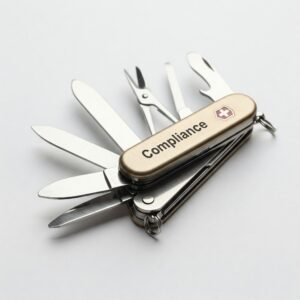In an increasingly interconnected world, businesses often find themselves operating across multiple jurisdictions, each with unique opportunities and challenges. One critical factor that can significantly influence the success of such operations is geographical risk. But what exactly is geographical risk, and why should your business care?
What Is Geographical Risk?
Geographical risk refers to the potential challenges and vulnerabilities that arise from operating in or interacting with specific regions or countries. This risk can stem from a variety of factors, including political instability, economic volatility, regulatory differences, and even natural disasters. In the context of anti-money laundering (AML), geographical risk focuses on how certain jurisdictions may present elevated risks for illicit activities, such as money laundering or financing terrorism.
Why Is Geographical Risk Important?
Failing to account for geographical risk can lead to severe consequences for businesses, including regulatory penalties, reputational damage, and financial losses. For example:
- Compliance Failures: Not addressing AML geographic risk can result in non-compliance with regulatory requirements, especially if your organization operates in or deals with AML high-risk countries.
- Reputation Damage: Being associated with jurisdictions known for high corruption or money laundering activities can tarnish your brand.
- Operational Challenges: Unforeseen political or economic instability can disrupt supply chains or lead to sudden changes in regulatory requirements.
Factors That Influence AML Geographic Risk
When assessing country risk rating and identifying high-risk regions, businesses typically consider the following:
- Regulatory Environment: Jurisdictions with lax AML regulations or enforcement are often categorized as high-risk.
- Corruption Levels: A high level of corruption can facilitate illicit financial activities.
- Sanctions and Watchlists: Countries subject to international sanctions or included in high-risk country lists by organizations like the Financial Action Task Force (FATF).
- Economic Instability: Volatile economies can be breeding grounds for fraud and money laundering.
- Criminal Activity: Regions with a high prevalence of organized crime or terrorism are inherently riskier.
How to Mitigate Geographical Risk
While geographical risk cannot be entirely eliminated, businesses can take proactive steps to mitigate it effectively. Here are some strategies:
- Conduct Thorough Due Diligence Implement robust due diligence processes to assess the AML country risk of every jurisdiction where your business operates or interacts. This includes reviewing a country’s regulatory framework, corruption index, and inclusion on any high-risk country lists.
- Leverage Technology Advanced technologies, such as AI-driven analytics, can help identify patterns and assess risks associated with specific regions. This can enhance your ability to detect and address AML geographic risk in real-time.
- Implement Risk-Based Policies Tailor your compliance program to focus more resources on high-risk regions while maintaining baseline monitoring in low-risk areas. For example, transactions from countries with elevated country risk ratings might warrant additional scrutiny.
- Stay Informed Keep up-to-date with global developments, such as updates to the FATF’s high-risk country list or changes in sanctions policies. Regularly revisiting your risk assessments ensures your strategies remain effective.
- Engage in Staff Training Educating your team about the nuances of geographical risk, including AML country risk, is crucial. Ensure they understand why regions matter and how they can identify and report red flags.
- Partner with Experts Sometimes, navigating geographical risk can be complex. Partnering with experts in enhanced due diligence and risk assessment can provide your business with deeper insights and actionable recommendations.
Conclusion
Geographical risk is a critical aspect of doing business in today’s global landscape. By understanding and addressing the factors that contribute to AML geographic risk, businesses can not only remain compliant but also safeguard their reputation and operations. Mitigating geographical risk may require effort and investment, but the rewards—stability, trust, and long-term success—are well worth it.
Understanding the nuances of the regions you operate in is not just a regulatory necessity; it’s a strategic advantage. Take the time to assess and address these risks comprehensively to build a resilient and compliant business.







